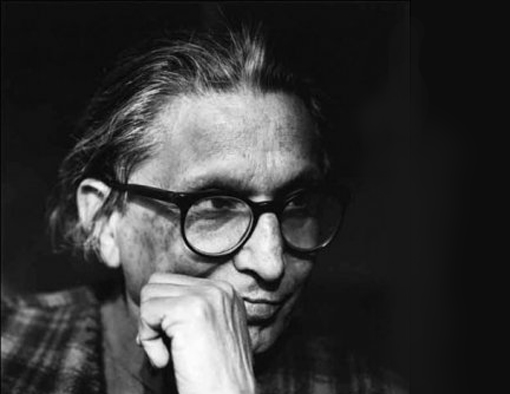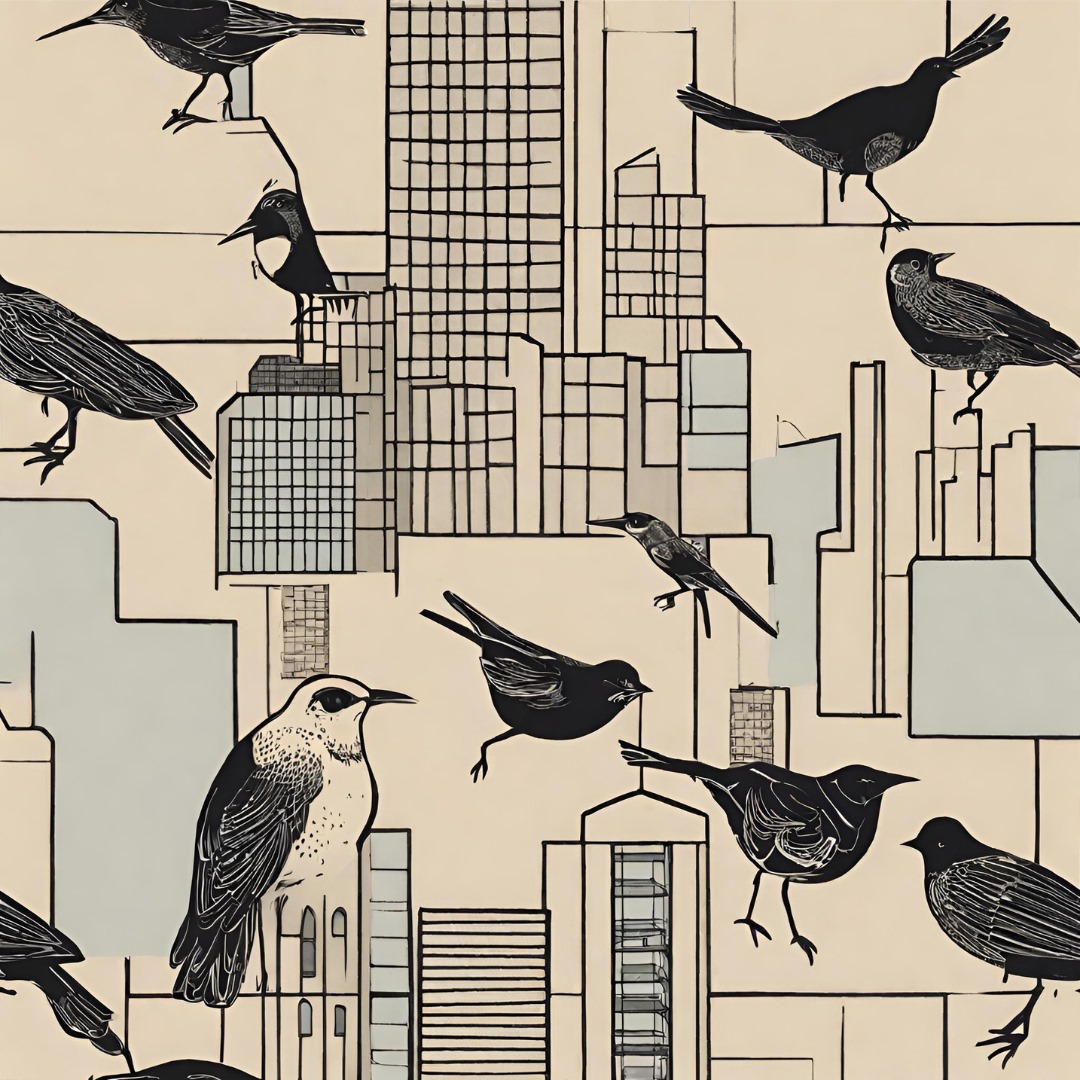“Doshi, not just enjoyed the human connection of design, and privileged it with action, but he did it within his responsibilities as an architect, enjoying its nitty gritty, its nuts and bolts. “
B.V. Doshi | August 26, 1927 (Pune, India) – January 24, 2023 (Ahmedabad, India)
B.V. Doshi, the legendary architect and educator, is no more. Admired by generations of students and professionals, Doshi’s passing not just brings the curtain down on his long and illustrious 70-year career, but many would consider it the end of an era in Indian architecture. Indeed, internationally and in our country, he was the best-known Indian architect – Doshi was the only Indian ever to have been awarded the Pritzker Prize for Architecture in 2018 at 90 years of age, along with being the recipient of the RIBA Gold Medal, the Padma Vibhushan and at least 20 more International and National awards for his life’s work in Architecture.
While with Doshi’s legacy, it is only natural, to define him in terms of his architectural contributions, his laurels and recognitions are also all too well known, but notwithstanding his legendary stature what has always been personally inspiring for me was his simplicity and humility. In paying a final tribute to Doshi, I thought it worthwhile to his memory and for the many hundreds of students whose lives he touched to remind ourselves of the power of his many human qualities – that he was so approachable and always so generous with advice that was accompanied by an eye-opening and infectious positivity of observations to share for something better and with anyone that cared to approach him. You can see this quality not just in the man but in his buildings- the simplicity of the materials but with a powerful expression of detail, the strength of his form but tempered by low, unpretentious scale.
Many would say above all, Doshi was a polymath- not only a great practitioner but a philosopher, an environmentalist, social reformer, humanist, artist and above all a great teacher whose influence touched thousands of Indian architects. As a student of architecture in Gujarat, I practically grew up being surrounded by his legend, visiting his office and famous buildings wherever I could, and attending his engaging talks and lectures. I might say that I still did not get enough opportunities to fully absorb his aura and see enough of him in action. Doshi had the rare ability to actionise ideas, where most could just think about them. Whether it was to paint the story of the design of a building, build an architectural school (CEPT), or collaborate with artist MF Hussain, to build a gallery installation (Amdavad Ni Gufa-aka Hussain Doshi Gufa).
The sheer complexity of architectural practice would make most oscillate between their solitude and collective work for the delivery of project objectives. Ordinarily, this is a process that involves long contemplation for the gathering of thoughts and ideas, and then an unleashing of energy with which to create. Rarely are architects like Doshi, that have been able to extend and expand their energies to accomplish so much more than just their professional duties and their practice objectives while simultaneously ideating. Creative to a fault, he dabbled in so many allied disciplines and activities- playing and opening the field of placemaking and space-making to embrace immense possibilities and discover new ways of engagement with his values. His holistic self-nurturing flowed into his astonishing sensorial ideas small and big. In Doshi, there was always enough energy to invest in ideas, in places, in people and all at the same time.
A particularly important aspect of his restless creative spirit that animated everything he did- was his value-laden experimentation. Doshi, not just enjoyed the human connection of design, and privileged it with action, but he did it within his responsibilities as an architect, enjoying its nitty gritty, its nuts and bolts. There was something about the temperament of this great humanist, the creative attention, and the deeper aspect of his persona that so succeeded in providing the enormous energy to do so much each day at the workplace and personally. You would be astonished that almost everything is known about Doshi’s many accomplishments and almost all of his projects have been written about and celebrated as much for the Indianness of their design as for their environmental appropriateness. Doshi’s main interest may really have been the symbiotic relationship between architecture, nature and culture. His work was invariably responsive to contexts, socio-economic milieus, climate resilience and sustainability. He sharpened his focus by continuously envisioning solutions at so many scales, at once for the city, for building in the harsh Indian climate, for society with low-cost and cost-sensitive housing for the poor, public spaces, educational spaces, places for people to gather and so much more.
I recall seeing this quality of experimentation at his retrospective show at the National Gallery of Modern Art in 2014, where we got a glimpse into the periods in Doshi’s career where he experimented intermittently with art and painting, product design, furniture design- and at the show at the Kiran Nadar Museum of Art in 2019 called “Structuring form- the Innovative Rigour of Mahendra Raj”, where some of his projects collaborating with his engineering partners were showcased. Everything had a purpose and was embedded with his values.
Above his avatar as the artist-architect, he also remained faithful to sketching ideas of form and locale and large study models were part of the methodology of design evolution followed in his practice. Not many know of Doshi rendering his buildings and concepts exploring the ideas of space representation enjoying the possibilities of expressive painting and playful representation and privileging them as archival memorabilia ahead of the conventional plan and sectional drawings. Who can forget the paintings of Jaipur and his office Sangath inspired by the stylized representations resembling adaptations from Rajasthani and Mughal miniature paintings!
Thus, it must be said, his practice and his pedagogy were much more than just his modernist comprehension and are a tribute to an invincible spirit. His vision in architecture was to create specific local forms responsive to the sun, climatic conditions and setting. On many occasions with his Bauhaus influences, he returned to building crafts as the founding premise of all artistry and design activity. His language of ferro cement, shells, vaults, brick walls and exposed concrete slabs combined with the most simple and rudimentary common sensical devices to improve building performance and apply sustainable practices to all aspects of the design and building construction- like gathering rainwater and consuming it for irrigation and domestic uses.
At Sangath, he employed a landscape-based movement solution for the formation of more humane architecture, responding to a future society in tune with nature.
Doshi’s restless creative pursuits in large measure go to the inspirational presences of many of the Modernists in his life- the important influences from his international mentors and employers like Le Corbusier, and foreign collaborators like Louis Kahn (IIM Ahmedabad), the Structural engineer, Mahendra Raj (Tagore Memorial Hall and Institute of Indology Ahmedabad), friendships with Frei Otto, Buckminster Fuller, Charles and Ray Eames. For instance, Corbusier is often credited with discussions on light- the very qualities that Doshi learnt and used in his works as an element of the language of each building- to mention a few, the slanted skylights of the studios and galleries, the large vaulted fanlights of Sangath and the Gandhi Labour Institute, Louis Kahn’s philosophical musings on the nature of brick laid exposed in arches of all kinds, became the solution in so many institutional buildings Doshi and others in Ahmedabad designed.
Doshi established the precepts of his practice basing the learnt experiences of how at the ground, the concept of openness, spaces flowing together, with life within and outside the building, played a major role in his conceptions of a modern but Indian design. Perhaps it wasn’t a coincidence that many of his buildings have courtyards or are often raised up from the ground on pilotis. His devices allowed free-flowing open spaces under the building shaded from the harsh sun, with a variety of water pools and guided streams cooling the air, and plants growing all around the site to cool the ground. A variety of public spaces were created at a ground level that was accessible, shaded and close to nature to encourage serendipitous meetings, and foster community engagement and active participation in urban work life.
Doshi’s spatial planning methodologies always emphasise the design of the building for the diversity of all kinds: juxtapositions of people, functions, built forms, spaces, and activities are just some of the fundamental elements that help encourage an inclusive and sustainable public sphere that is local; Indian, if you will, and thrives at all times of the day and night. His concerns and his values have been about how a built environment that is in sync with nature is sustainable in and of itself. Where the light, the breezes and other things of simple significance are integral to creating places of great beauty. The beauty of the built is often not only in the details but in the big architectural decisions- the placement, the view, the touch and caress of the contact with the natural, the settings and the elements that evoke our humanity and our concern for the world we have been gifted.
Doshi will be missed but never forgotten.
Aashish Karode, B.Arch, M.U.D (Berkeley, USA); is an Architect and Urban Designer and is a design principal with Design Atelier-Urbis, New Delhi. With prior experience working with leading consultancy firms in India and America, Ashish has also taught Architectural Design, Urban Design and History of Architecture in both countries.
He considers Architectural Design to be a beautifully functional, ecologically responsible and environmentally sustainable sculpture and has been integrating BIM and recent technologies, into the traditional practice of architecture where building crafts, nature and people remain the driving premise in its creation. The recipient of numerous awards, notable buildings designed by Design Atelier include Chimes, in Gurgaon, Sufi in Chandigarh, PADC- Plastics Application Development Centre, Indian oil, in Panipat and a number of Schools and Campuses around the country.







